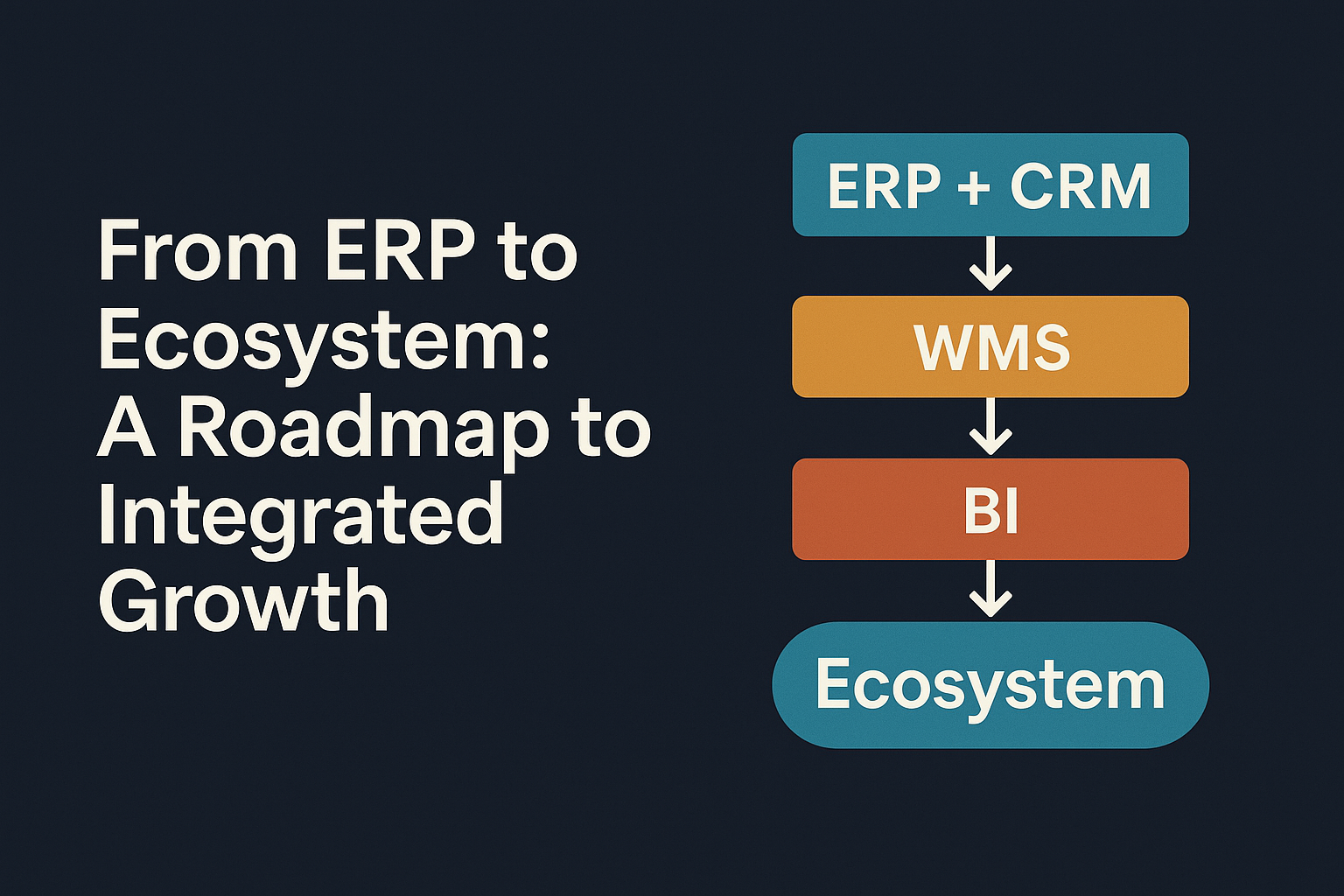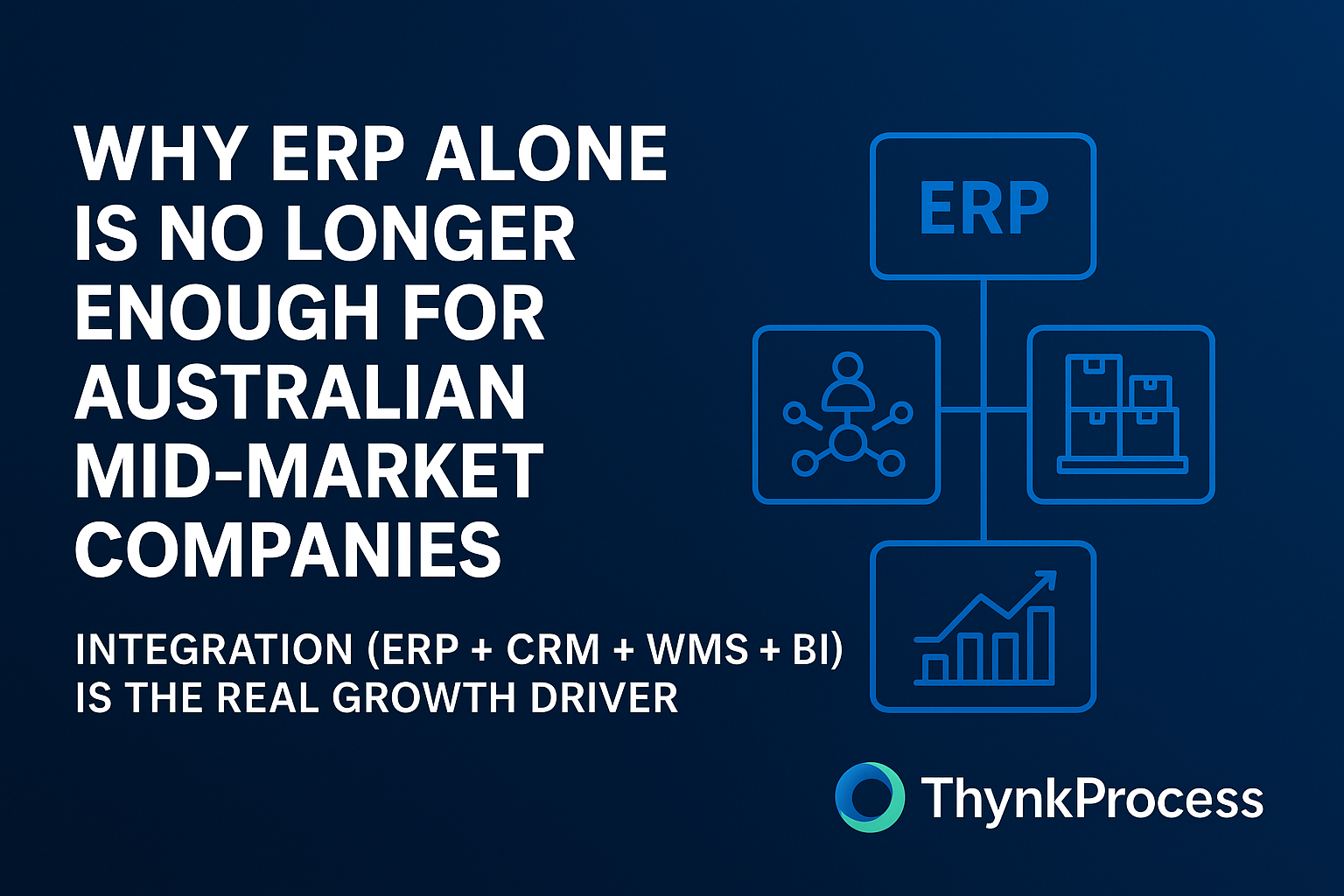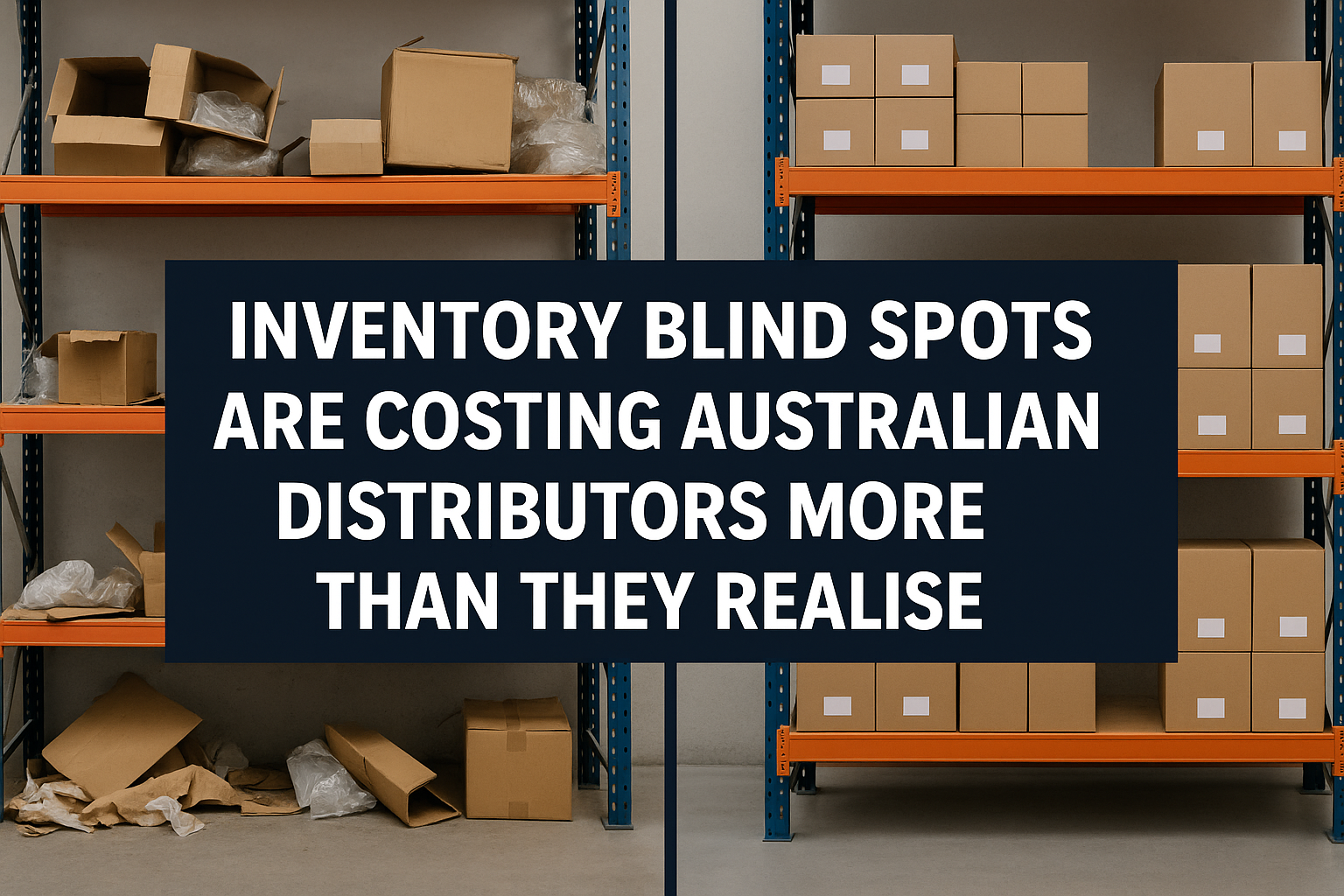From ERP to Ecosystem: A Roadmap to Integrated Growth

A strategic guide for Australian mid-market leaders ready to transform fragmented systems into competitive advantage.
Few months ago at the Australian Manufacturing Week 2025, we sat across a frustrated CEO— this time, a Queensland-based distributor with $30M+ in revenue. Despite having "best-in-class" systems, his team was spending 40% of their time on manual data reconciliation between ERP, CRM, and warehouse management. Sound familiar?
After 20+ years implementing enterprise systems across Australia's manufacturing and distribution sectors, we've seen this scenario countless times. The technology exists to eliminate these inefficiencies, yet most mid-market companies remain trapped in operational silos that constrain growth and cloud decision-making.
The challenge isn't technical—it's strategic. Despite Australia's ERP market being valued at AUD 2.52 billion in 2024 and projected to reach AUD 10.37 billion by 2034, many companies struggle with fragmented systems. The difference between companies that successfully build integrated ecosystems and those that remain stuck lies not in the technology they choose, but in the sequence and strategy they follow.
Here's the proven three-stage roadmap that transforms fragmented operations into a cohesive growth engine, supported by the latest Australian industry data on integration benefits and potential pitfalls.
Benefit 1: Operational Excellence Through Seamless Process Flow
The Integration: ERP + CRM as Your Foundation
Your first priority must be connecting your financial backbone (ERP) with your customer-facing operations (CRM). This integration creates continuous flow from lead generation through cash collection, eliminating the manual processes that drain productivity.
Australia's CRM market demonstrates the critical importance of this integration. Valued at AUD 1.97 billion in 2024 and expected to reach AUD 5.01 billion by 2033 with a 9.80% CAGR, the adoption of CRM by Australian businesses has witnessed a 9% increase in leads within the first three months of implementation. Companies can see monthly revenue increases of AUD 200,000 within just three months of proper integration.
When properly integrated, leads captured in your CRM automatically trigger quote generation in your ERP using real-time pricing and inventory data. Approved quotes become sales orders that immediately update inventory forecasting, trigger procurement workflows, and schedule production activities. Delivery completion simultaneously updates both systems, ensuring accurate invoicing and customer communication.
Critical pitfall to avoid: Over-customising standard solutions to match existing processes rather than optimising processes to leverage best-practice functionality. Given that 97% of Australian businesses are small businesses and 2.4% are medium-sized, the focus should be on affordability and scalability rather than complex customisation that creates ongoing maintenance burdens.
Benefit 2: Intelligent Operations Through Real-Time Visibility
The Integration: Adding WMS to Your Connected Foundation
With your financial and customer data flowing seamlessly, warehouse management system integration transforms physical operations from reactive to predictive. The Australian WMS market demonstrates explosive growth, valued at approximately AUD 101.96 million in 2024 and projected to soar to AUD 833.83 million by 2033, representing a CAGR of 26.30%.
This dramatic growth is driven by Australia's booming e-commerce sector, with over 9.5 million Australian households shopping online in 2024. Warehousing operations are under growing pressure to manage higher order volumes with greater speed and accuracy, making robust WMS solutions essential for competitive advantage.
Modern WMS integration creates automated workflows that eliminate manual processes while providing real-time supply chain visibility. Barcode scanning triggers automatic inventory updates, pick optimisation reduces travel time, and exception alerts notify managers before issues impact customers.
Critical pitfall to avoid: Underestimating the change management requirements for WMS implementations. Due to Australia's vast geography and complex distribution networks, managing regional warehouses and last-mile fulfilment becomes particularly challenging. Budget significant time for training across distributed teams and expect a 90-day learning curve for full system utilisation.
Benefit 3: Strategic Advantage Through Predictive Intelligence
The Integration: Business Intelligence Layer Across Your Ecosystem
With clean, integrated data flowing through ERP, CRM, and WMS, you're positioned to implement business intelligence that provides genuine competitive advantage. Australia's BI software market is projected to grow by 5.01% from 2024-2029, resulting in a market volume of AUD 0.60 billion by 2029, while the broader big data market is valued at AUD 5.93 billion in 2024.
Australian businesses are increasingly recognising the strategic value of data-driven decision-making. The big data market is forecast to grow at a CAGR of 12.30% from 2025 to 2034, potentially reaching AUD 18.92 billion by 2034, driven by organisations' ability to optimise processes and workflows through data insights.
Effective BI integration transforms three critical areas: demand forecasting replaces reactive inventory management, customer profitability analysis optimises resource allocation, and exception-based management prevents issues before they impact operations. This is particularly crucial in Australia's competitive retail environment, where businesses must manage everything from seasonal demand fluctuations to supply chain complexities across vast distances.
Critical pitfall to avoid: "Dashboard overload" syndrome where businesses create numerous reports that overwhelm rather than inform decision-making. Start with 3-5 executive dashboards that answer specific business questions relevant to Australian market conditions, then build operational reporting based on actual usage patterns. If a dashboard doesn't change behaviour, it's not adding value.
The Australian Integration Advantage
Successful system integration requires more than technical expertise—it demands deep understanding of Australian business practices, regulatory requirements, and market dynamics. With 96% internet adoption in Australia (World Bank, 2023) and a rapidly digitalising economy, the infrastructure exists to support sophisticated integration strategies.
However, Australian businesses face unique challenges including geographic dispersion, regulatory compliance requirements, and the need to manage seasonal demand variations. Local expertise becomes critical for navigating these complexities while ensuring solutions meet Australian accounting standards, taxation requirements, and employment legislation.
The Australian Bureau of Statistics reports steady business growth across key sectors, with Health Care and Social Assistance increasing by 6.6%, Transport, Postal and Warehousing by 5.1%, and Financial and Insurance Services by 3.7% in 2024-25. This growth creates opportunities for businesses that can scale efficiently through integrated systems.
Your Strategic Next Step
The roadmap from fragmented systems to integrated ecosystem is proven, but execution in the Australian context requires local expertise and understanding. Australia's ERP market growth of 15.20% CAGR demonstrates that businesses are investing heavily in digital transformation, but success rates improve dramatically with proper strategic planning.
At ThynkProcess, we've become Australia's fastest-growing SAP Business One partner by focusing exclusively on this integration challenge for mid-market manufacturers and distributors. Our outcome-based approach ensures measurable results at each stage, while our 95+ successful implementations provide proven frameworks that eliminate common pitfalls specific to Australian businesses.
The question isn't whether you need an integrated ecosystem—it's when you'll start building it. Every month of delay allows competitors to gain ground through better operational efficiency and decision-making capability.
Ready to transform your operations from reactive to predictive? Let's discuss your specific integration roadmap and how ThynkProcess can accelerate your journey from ERP to ecosystem.
Connect with ThynkProcess to explore how integrated ERP, CRM, WMS, and BI systems can drive sustainable growth for your Australian business. We turn technology complexity into competitive advantage.
Simply email us at info@thynkprocess.com.au or call (03) 7075 3900 and one of our certified consultants will contact you within 48 hours.
References
- Salesforce, State of the Connected Customer Report, 2024
- PwC, Digital Trends in Supply Chain 2025
- Gartner, Market Guide for Real-Time BI Platforms, 2023
- IDC, ERP and Digital Ecosystem Study, 2024



.jpeg)
